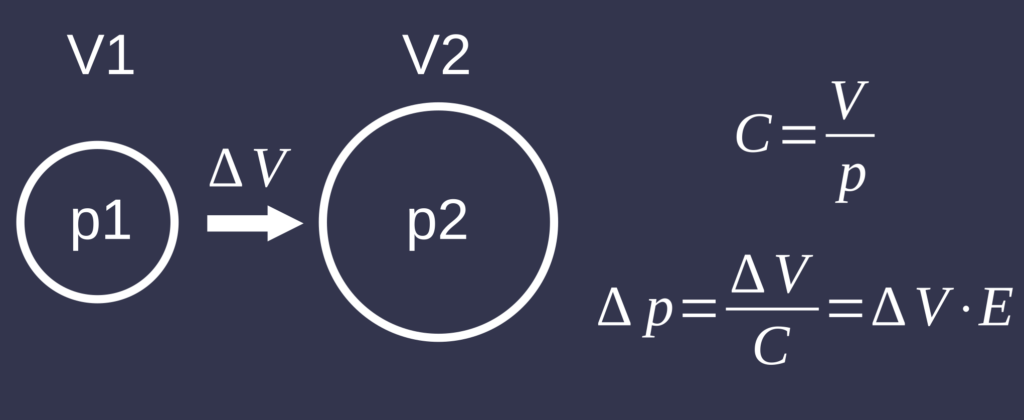The relationship between pressure and volume in a fluid can be better understood through the concept of compliance, which measures how easily the volume of a fluid changes in response to changes in pressure. Simply put, compliance is a way of describing how flexible or stiff a system is: the higher the compliance, the easier it is for the volume to expand or contract when pressure changes. On the other hand, low compliance means the system is stiffer and resists volume changes even when pressure is applied.
In fluids, this concept plays out differently depending on the type of fluid and the system it’s in. Liquids, like water, have very low compliance because they are nearly incompressible. When pressure is applied to a liquid, there is very little change in its volume. For example, in hydraulic systems, increasing the pressure doesn’t change the volume of the liquid much, but it can generate significant forces. This low compliance is what makes liquids ideal for such systems, where volume stability is crucial.

In contrast, gases and systems that are more elastic—like balloons or flexible containers—have higher compliance. In these systems, a relatively small increase in pressure results in a noticeable expansion of volume. For example, when you blow air into a balloon, the volume expands significantly as the pressure increases, demonstrating high compliance.
In physiology, the concept of compliance is often used to describe how blood vessels react to changes in blood pressure. Veins, which are more flexible, have higher compliance than arteries. This means veins can expand easily to accommodate changes in blood volume, while arteries, which are stiffer and less elastic, have low compliance and resist volume changes, helping to maintain steady blood pressure.
In general, compliance helps explain the balance between pressure and volume in different systems. If a system has high compliance, even a small change in pressure can cause a significant change in volume. In low compliance systems, pressure changes don’t lead to much variation in volume, but can still have other effects, like generating large forces. Understanding this relationship is essential in fields like fluid mechanics, physiology, and engineering, where pressure and volume dynamics are key to system performance.
Elastance is the reciprocal of compliance, representing the ratio of pressure to volume.
In hemodynamics, the standard unit for measuring pressure is millimeters of mercury (mmHg), and for volume, it is milliliters (ml).
